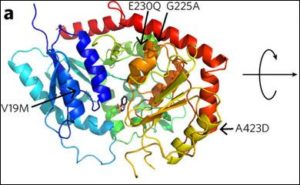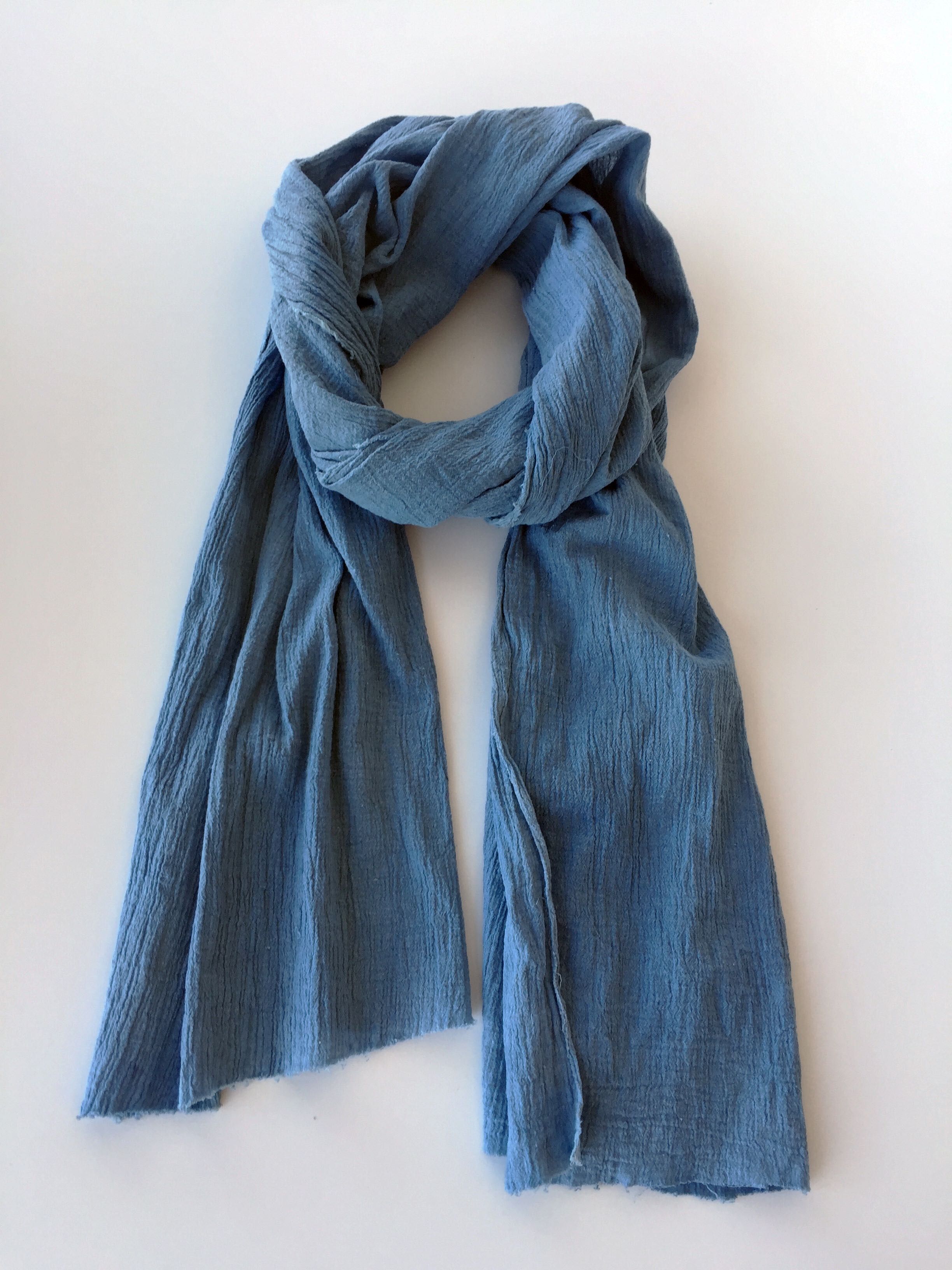Indigo has been prized since antiquity for its vibrancy and deep blue hue and, for more than a century, its unique properties have been leveraged to produce the popular textile blue denim. However, the dyeing process requires chemical steps that are environmentally damaging. A team of researchers in the Molecular Biophysics and Integrated Bioimaging (MBIB) and Biological Systems and Engineering (BSE) Divisions, at JBEI, and UC Berkeley have developed a promising alternative indigo dyeing process that relies on genetically engineered bacteria, mimicking the natural biochemical protecting group strategy employed by the Japanese indigo plant Polygonum tinctorium.

The crystal structure of an enzyme from P. tinctorium with bound indoxyl sulfate, which is an unreactive analog to indoxyl, the indigo precursor (Figure 2a).
The new sustainable dyeing strategy they propose does not only circumvent the use of toxic chemicals required for indigo chemical synthesis, but also eliminates the need for an environmentally unfriendly reducing agent for dye solubilization. The proposed process, though not without challenges, goes further than previous attempts by researchers to clean up the indigo dyeing process. It provides a promising new strategy that offers a much-needed update to the historic, but unsustainable, indigo dyeing process which has undergone minimal changes over the last hundred years, while the demand for the dye is higher than ever before, making the current ecological consequences unsustainable.
John Dueber (BSE faculty engineer), Paul Adams (MBIB Division Director), Ditte Welner (former JBEI/MBIB researcher), and UC Berkeley colleagues, describe their findings in the recent on-line issue of Nature Chemical Biology.




